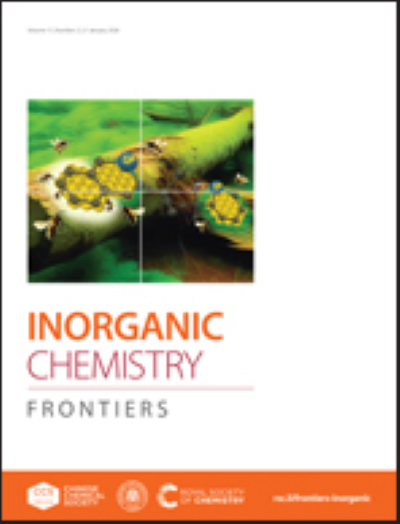Profiting from Light-Induced Metal-to-Metal Intramolecular Electron Transfer: Towards Highly Efficient Heterodinuclear Photosensitizers for Photodynamic Therapy
IF 6.1
1区 化学
Q1 CHEMISTRY, INORGANIC & NUCLEAR
引用次数: 0
Abstract
Photodynamic therapy is receiving increasing attention due to its versatile application in anticancer therapy. Ru(II) and Pt(II) complexes are among the most investigated compounds as potential photosensitizers for photodynamic therapy based on their outstanding photophysical and biological properties (i.e., strong emission, high intersystem crossing efficiency, large Stokes shift, high (photo-)stability, biological compatibility, good water solubility). While these classes of compounds have been widely studied separately or combined in derivatives that display a dual therapeutic effect, herein, a novel study on the conjugation of Ru(II) and Pt(II) fragments into a single bimetallic conjugate is proposed. It is assumed that this molecular design could undergo an intramolecular electron transfer from the Ru(II) moiety to the Pt(II) moiety upon irradiation to produce a highly efficient excited state. Capitalizing on the presence of both metals, the bimetallic conjugate was found to generate singlet oxygen with an outstanding efficiency in comparison to its individual components. To enhance the pharmacological profile, the bimetallic complex was encapsulated into polymeric nanoparticles. The nanoparticles were demonstrated to eradicate human breast adenocarcinoma monolayer cells as well as multicellular tumor spheroids upon light irradiation at nanomolar concentrations. We are confident that this approach will open new avenues towards the development of novel highly efficient photosensitizers.利用光诱导金属到金属的分子内电子转移:用于光动力治疗的高效异核光敏剂
光动力疗法因其在抗癌治疗中的广泛应用而受到越来越多的关注。Ru(II)和Pt(II)配合物由于其突出的光物理和生物特性(即强发射、高系统间交叉效率、大Stokes位移、高(光)稳定性、生物相容性和良好的水溶性)而成为光动力治疗中研究最多的潜在光敏剂。虽然这类化合物已经被广泛地单独研究或组合成具有双重治疗效果的衍生物,但本文提出了一项关于Ru(II)和Pt(II)片段偶联成单一双金属偶联物的新研究。假设这种分子设计可以在辐照下经历从Ru(II)片段到Pt(II)片段的分子内电子转移,从而产生高效的激发态。利用两种金属的存在,发现双金属共轭物产生单线态氧的效率比其单独的成分高。为了增强药理学特征,双金属配合物被包裹成聚合物纳米颗粒。在纳米摩尔浓度的光照射下,纳米颗粒被证明可以根除人乳腺腺癌单层细胞和多细胞肿瘤球体。我们相信,这种方法将为开发新型高效光敏剂开辟新的途径。
本文章由计算机程序翻译,如有差异,请以英文原文为准。
求助全文
约1分钟内获得全文
求助全文
来源期刊

Inorganic Chemistry Frontiers
CHEMISTRY, INORGANIC & NUCLEAR-
CiteScore
10.40
自引率
7.10%
发文量
587
审稿时长
1.2 months
期刊介绍:
The international, high quality journal for interdisciplinary research between inorganic chemistry and related subjects
 求助内容:
求助内容: 应助结果提醒方式:
应助结果提醒方式:


